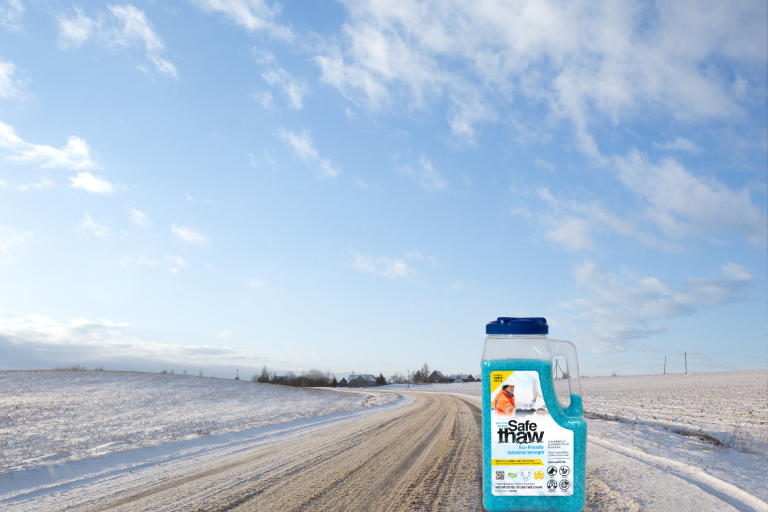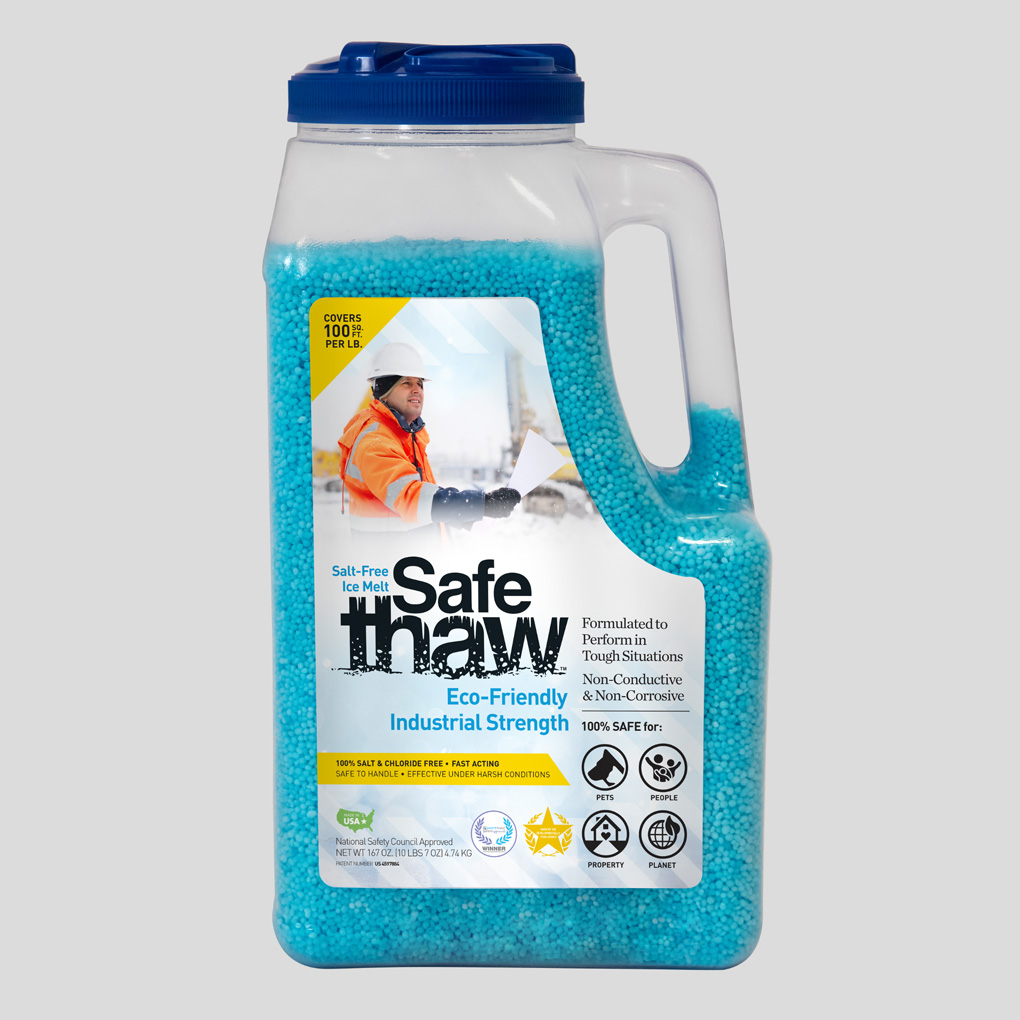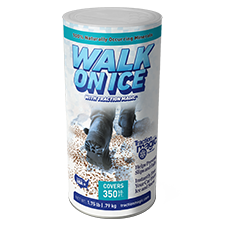At What Temperature Does Ice Melt: Factors & Melting Point Differences

Ever pondered why ice turns to water when the weather warms up? At what temperature does ice melt? It’s like a hidden dance between temperature and science! Let’s unlock the secrets behind this mesmerizing process of ice melting. We’ll dig deep into the nitty-gritty of what makes ice say goodbye, explore different substances in the mix, and reveal why Safe Thaw is the ice-melting hero.

Safe Thaw
Safe Thaw was created as the ice management solution for tough winter environments. Ideal in commercial and industrial properties, shops, government agencies, bridges, and construction.
At What Temperature Does Ice Melt
Picture this: ice sitting cool and solid. But when things heat up, like the rising sun in the sky, something magical happens. Ice melts! This enchanting transformation takes place when the temperature sneaks past a certain point called the melting point. For water, this magic moment is at 0 degrees Celsius (32 degrees Fahrenheit). Once the thermometer winks above this number, ice starts to party – its molecules get jiggly and excited, turning into the water we know. There know it- what temperature does ice melt at.
The Chemistry Marvel: Ice Melters Take The Stage
Let’s zoom in on the stars of our show – the ice-melting chemicals. They’re like wizards, each with their own spells to break the icy spell:
- Calcium Chloride: This works fast, melting ice even when things are chilly at -20 degrees Celsius (-4 degrees Fahrenheit). It’s like creating a mini sauna! When calcium chloride meets ice, it gets chatty, dissolving into a liquid called brine. This brine packs a punch – its freezing point is lower than water’s, so ice just can’t resist melting. But is it the best thing to use? Well, we’ll come to that later.
- Magnesium Chloride: This chemical loves attracting moisture from the air, like a sponge soaking up spills. It’s like a cozy campfire at -9 degrees Celsius (15.8 degrees Fahrenheit). As it meets ice, it warms up, to melt ice. Just like calcium chloride, this friendly looking chemical has big secrets.
- Rock Salt (Sodium Chloride): You know this character – it’s like a classic winter friend. But it’s not as brave in super-cold temperatures. It’s the life of the party above -9 degrees Celsius (15.8 degrees Fahrenheit). When it meets ice, it throws a salt-and-water party, creating a brine that shows ice the exit sign. If you’ve known this element for a while you know a lot of goodness also exits with every usage of this element.
- Safe Thaw: And here’s our superhero, Safe Thaw! No toxic or chemical tricks up its sleeve – it’s all about being safe for the environment and everything around it. Even at a freezing 40 degrees Fahrenheit), it’s ready to work its magic. Instead of chemicals, it uses a natural reaction to warm up, melting ice while being gentle on pets, plants, and our planet.
The Star Of The Show: Safe Thaw
Among these characters, Safe Thaw shines like a superstar. It’s not just about melting ice – it’s about being kind to nature. When the icy challenge gets tougher, Safe Thaw doesn’t back down. With a wide temperature range and a gentle touch, it’s a winning choice for both us and the environment.
Salt And Ice Temperature: Why It Matters In Real Life
Now that you know the big players in the melting game, let’s pause and think: how do these chlorides actually affect the salt and ice temperature balance? Imagine sprinkling rock salt on your driveway. The first question most people ask is—does it always work right away? Not exactly. Salt lowers the freezing point of water, but the catch is that it has limits. Once temperatures dip too low, the brine it creates simply can’t keep up, and ice stays stubbornly in place.
So, if you’ve ever found yourself staring at your driveway on a freezing morning, wondering why the salt isn’t working, the science explains it. Above -9°C (15.8°F), sodium chloride holds its ground. But go lower, and you need something stronger—hence why so many switch to harsher chloride like calcium or magnesium chloride. Yet that’s when the real risks kick in: corroded concrete, damaged greenery, and sore paws for your pets. Safe Thaw avoids that tug-of-war completely. Instead of forcing a chloride battle, it creates heat through a safe, natural reaction—no toxic fallout, just effective melting.
And if you’re wondering, at what temperature does ice melt how do you know? The answer depends on what’s on the ground. Plain ice will begin to surrender at 0°C (32°F). Add salt, and you can push that melting point lower. But with Safe Thaw, you’re not simply adjusting numbers—you’re changing the entire process.
At What Temperature Will Ice Melt? Clearing Up The Confusion
Here’s a common question: at what temperature will ice melt, really? It sounds simple, but it gets tricky when you mix in chlorides. Ice on its own always tips into water at 0°C. But the temperature of melting ice shifts when something is added into the equation.
Take this scenario: it’s -15°C (5°F), and you toss down rock salt. Will it melt? Not likely. The salt just sits there like a spectator. But swap it with calcium chloride, and you’ll see melting because it can push the freezing point far below what salt can handle. Still, that doesn’t mean it’s safe. What’s the trade-off? More damage to your surfaces, your soil, and your pets.
Safe Thaw, by contrast, doesn’t need to “negotiate” with ice in that same way. Even when temperatures plummet, its action remains reliable because it generates its own heat. So while most people are asking, at what temperature does ice melt how do you know if your product is even working?—with Safe Thaw, the results are visible in minutes. No guessing games, no damaged walkways.
And here’s a fun thought: next time you hear someone say, “ice always melts at 0°C,” you’ll know the truth. Yes, that’s the baseline—but what you spread on it can change the rules of the game.
100% salt & chloride-free, fast acting Ice Management Solution
Conclusion
By now, the icy puzzle feels a lot less mysterious, doesn’t it? The melting point of ice isn’t just about at what temperature will ice melt—it’s about the bigger story of chemistry, environment, and the products we choose. Salt might work in mild conditions, calcium chloride might power through colder days, but both come with hidden costs.
Safe Thaw shifts the conversation entirely. Instead of battling ice with corrosive chlorides, it uses a safe, natural process that works across a wide temperature range. So the next time you catch yourself asking, at what temperature does ice melt how do you know if your driveway is safe to walk on?—you’ll have the answer ready. It’s not only about numbers on a thermometer. It’s about choosing a solution that works with nature, not against it.
And that’s why Safe Thaw stands tall as the true winter hero—melting ice, protecting concrete, keeping pets safe, and giving you peace of mind, no matter how low the mercury drops.
Try Also Our Other Winter Safety Products:
Safe Paw
The Original and #1 Selling Pet and Child Safe Ice Melt for over 20 years. Guaranteed environmentally safe –It won’t harm animals or children, and it won’t damage your property. That’s Safe Paw. Safe Paw can change how winter affects our planet.

Walk On Ice
The handy disposable canister can be taken everywhere, with the same 100% naturally occurring minerals that provide instant traction on ice or snow. Use it on sidewalks, steps, or as an instant traction agent for your car.



